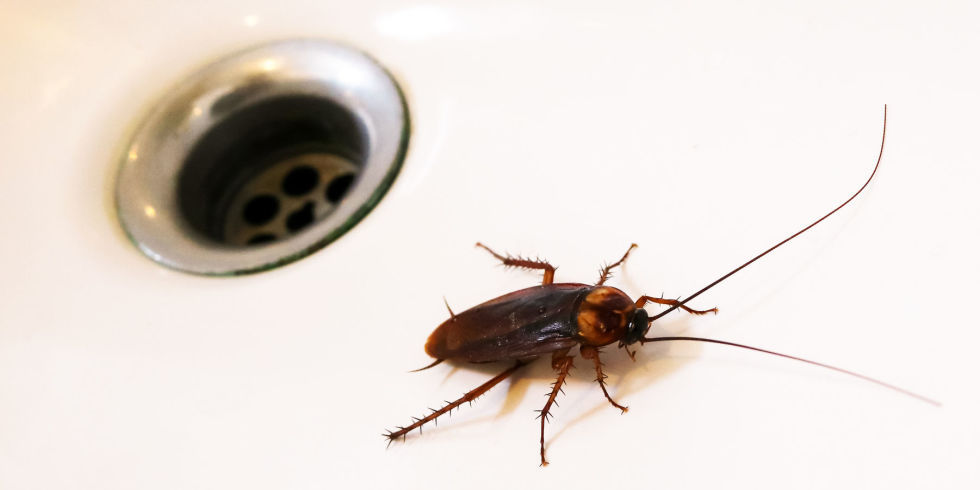Flick on the kitchen lights and the scuttling legs and antennae of cockroaches on the countertops can live up to your worst nightmares, but these pests don’t just cause the heebie jeebies. They can contaminate your food, transmit dangerous bacteria, and worst of all, survive even the best-intentioned eradication attempts.
Luckily it’s possible to shut down even the most stubborn infestations with a few tricks and tools:
1. Identify the problem and seek professional help if you need it.
Out of over 4,000 cockroach species in the world, most Americans encounter only one or two types: German cockroaches and American cockroaches. The German variety have light-brown bodies with two parallel dark stripes down the sides and they measure less than an inch long.

Reddish-brown American cockroaches grow slightly bigger, at about 1.5 inches. They also predominantly live outside in places like mulch and garbage heaps.

Since cockroaches can taint your food and countertops with illness-causing E. coli and salmonella, don’t take an infestation lightly. If you’re struggling to eradicate roaches or identify where they’re coming from, you may need to bring in pest control professionals. They can pinpoint what kind you have and the source of the issue.
2. Cut them off from food.
Just like people, these pests need sustenance to survive. Unlike people, they can live off almost anything left out for them, like unopened food, debris, and even crumbs.
Start by cleaning spilled or leftover food. A forgotten cereal box in the back of the cabinet is a gold mine for roaches. Don’t leave any dishes on the counter or in the sink either, advises Orkin entomologist Chelle Hartzer.
Go deeper — literally — by checking behind cabinets and appliances too. “They like behind the refrigerator because that’s a nice, warm environment,” Hartzer explains. “Nobody cleans behind their refrigerator so there’s usually a food source for them back there.”
Store your garbage in a bin with a tight-fitting lid and take it out regularly, adds Mike Goldstein, a Certified Pesticide Applicator for Woodstream. Don’t forget about the bottom of the trash pail too; wipe out any residue or leftover gunk.
3. Eliminate their hiding places.
In addition to food, roaches need harborage to thrive. Their favorite nooks and crannies include stacks of paper and cardboard boxes, so recycle any you have laying around. Cleaning up any clutter will deter roaches from hanging around — or coming back.
4. Put out bait — but don’t spray.
While good sanitation and housekeeping is key, you can also employ some some other tools in your war on roaches. “Baits are the ideal option for homeowners to use, because they’re simple to apply,” Goldstein says. “You do not want to spray a pesticide in large areas because it may contaminate surfaces that you do not want contaminated: countertops, appliances, etc. Baits are a cleaner and less risky way to control the problem.”
Amazon’s best-seller — Advion Syngenta Cockroach Gel Bait — has over 13,000 reviews with an average four-and-half star rating ($23, amazon.com).
5. Seal up entry points.
Roaches can flatten and scuttle their way through cracks or even torn window screens, so shut out any future invaders by sealing up gaps between the interior and the outdoors (or other apartments or condo units) with materials like door sweeps, clear caulk, or steel wool. Hartzer advises getting down on floor-level and looking at your entryway. “If you can see daylight underneath your door, that means roaches can get in,” she says.
Don’t forget about the things you purposefully bring into your home either. Groceries, deliveries, or old furniture can all contain a few hitchhikers, so inspect them carefully. “Think of when your Amazon package gets dropped off and it sits there all afternoon until you get home from work,” Hartzer says. “Cockroaches love that cardboard; it’s the perfect environment for them to hide.”













